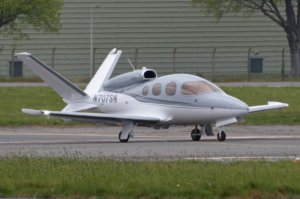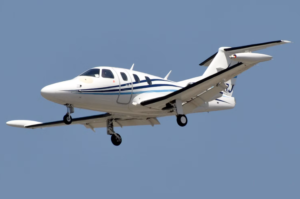Matthew Austin Ryan from Simpleflying – Reports
Summary
- Private jet owners should consider whether they prioritize piloting their own aircraft or traveling with larger groups when choosing between single or multi-crew jets.
- Single-pilot private jets like the Cirrus Vision Jet SF50, HondaJets, and Eclipse 550 offer advanced avionics and safety features, making them ideal for owner-operators.
- Single-pilot resource management (SRM) focuses on the decision-making and multitasking abilities of one pilot, while crew resource management (CRM) emphasizes communication, teamwork, and coordination among multiple crew members for safe and efficient flight operations.
Depending on their priorities, private jet owners may benefit from single-crew or multi-crew aircraft. Those who plan to pilot their own aircraft may benefit from the simpler designs and operation of smaller, single-pilot jets, while those who plan to ride as a passenger and bring along larger groups may find that multi-crew jets will better meet their needs.
Below we explore several options for single-pilot business jets and consider the concepts of Single-Pilot Resource Management (SRM) and Crew Resource Management (CRM) involved in safely managing either single-or-multi-crew flight decks.
Generally speaking, most civil jet aircraft utilize crews of two pilots, but this is not always the case. Several smaller jets targeting more personal use are certified for single-pilot operation.
The Cirrus Vision Jet SF50 is a single-engine private jet that a single pilot can fly. Designed with advanced avionics and safety features, including a Cirrus Airframe Parachute System (CAPS) that can deploy in emergencies, this is an ideal choice for owner-operators.

Alison Wilson via Flickr
HondaJets are another single-pilot-friendly aircraft known for their innovative design and fuel-efficient engines. It features an Over-The-Wing Engine Mount (OTWEM) configuration, which enhances performance and cabin space while allowing easy operation for a single pilot.
The Eclipse 550 is an additional relatively cost-effective twin-engine jet that can be flown by one pilot. Its lightweight design and modern avionics enable efficient single-pilot operations without compromising on performance.

Erik Salard via Flickr
Single-pilot resource management (SRM)
Single-Pilot Resource Management (SRM) is a concept that focuses on the decision-making and multitasking abilities of a single pilot in the cockpit. Unlike traditional Crew Resource Management (CRM), where there is a crew to share tasks and responsibilities, SRM places the entire onus of operating the aircraft on one individual. It emphasizes effective time management, workload distribution, and maintaining situational awareness.
Pilots who utilize SRM must be proficient in prioritizing tasks, knowing which non-essential activities are worth doing, and managing cockpit distractions effectively. They should have an excellent understanding of their aircraft’s systems and limitations to make informed decisions during critical phases of flight. SRM also emphasizes self-assessment and the importance of recognizing personal limitations so pilots do not succumb to task saturation or fatigue.
Crew Resource Management (CRM)
In contrast to SRM, Crew Resource Management (CRM) is utilized by pilots in aircraft with multiple crew members. CRM focuses on optimizing communication, teamwork, and coordination among pilots, flight attendants, and other crew members to ensure safe and efficient flight operations.
CRM training emphasizes the value of clear and concise communication, mutual respect, and the ability to work together efficiently, particularly during high-stress situations or emergencies. Crew members are encouraged to challenge each other respectfully and share responsibilities, fostering a culture of collaboration and safety.